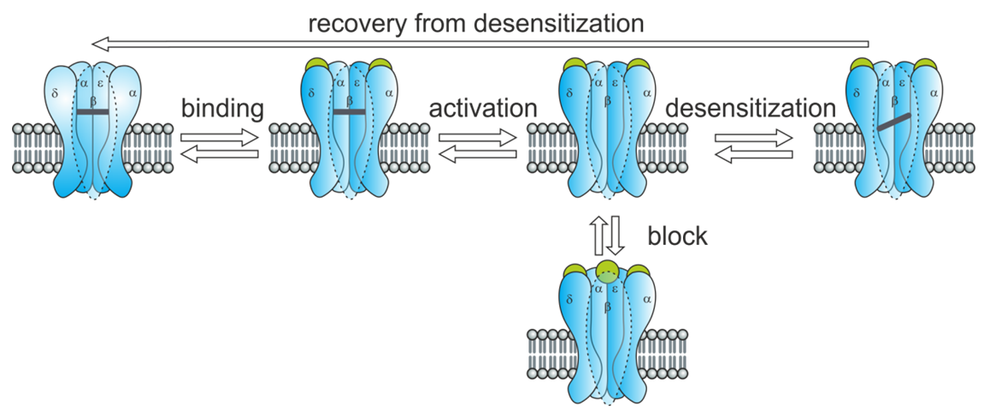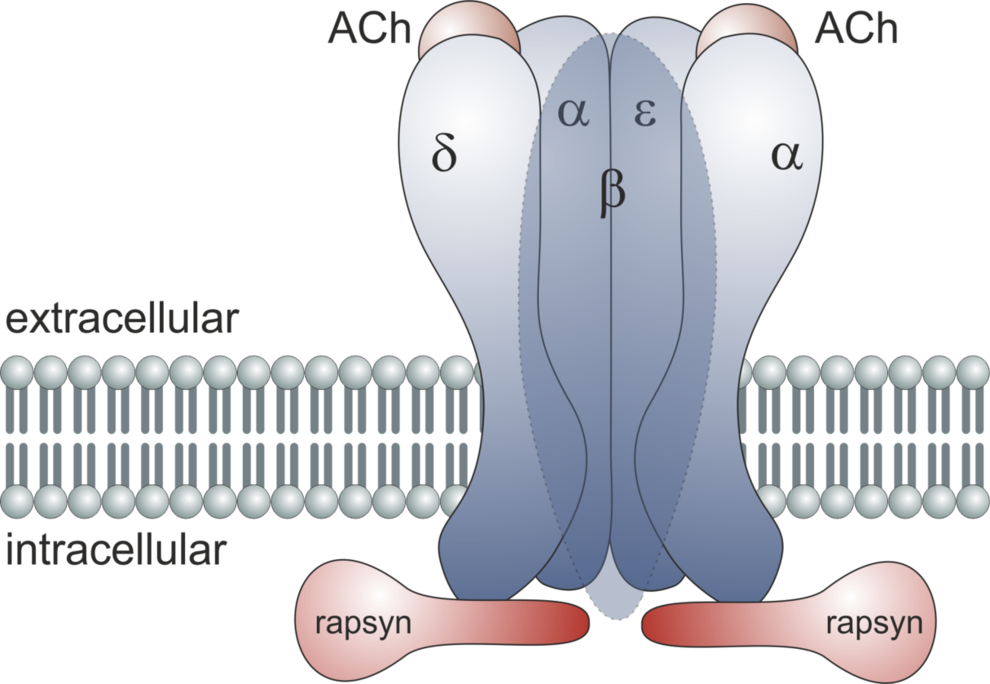Acetylcholine receptors (AChRs) are integral membrane proteins, which respond to the binding of acetylcholine to extracellular binding sites. Two major subtypes can be distinguished: muscarinic and nicotinic receptors. While muscarinic receptors are metabotropic receptors, triggering a G-protein coupled second-messenger cascade, nicotinic receptors are ligand-gated ion channels, leading to a cation influx and thus to a depolarization of the cell. Nicotinic acetylcholine receptors (nAChRs) can be further divided in neuronal and muscle receptors. However, in addition to these name-giving cell-types, nAChRs have also been found in other cells including lymphocytes, macrophages, dendritic cells, adipocytes, keratinocytes, endothelial cells, and epithelial cells of the intestine and lung. Due to this variety, nAChRs are involved in a large number of different physiological and pathophysiological mechanisms.
A characteristic feature for all nicotinic acetylcholine receptors is a fast activation and a fast onset of desensitization. Degree and kinetics of desensitization varies due to agonist exposure time, agonist concentration and agonist structure. After agonist removal the channels recover and another activation can be induced. At high concentration a pore block can be observed (Scheme).



